“Get it.”
We are familiar with Alexander Graham Bell’s interaction with Joseph Henry from the letter he wrote to his his parents, Alexander Melville Bell and Eliza Symonds Bell. Bell describes to them his visit to the Smithsonian Institute to learn more about electricity and magnetism from one of America’s leading innovators and scientists, Joseph Henry. During this meeting, Professor Henry and Bell conduct an experiment which they produce noise from a coil by exciting the coil with a current of electricity.
In a later conversation between the two American scientists, Bell mentions his desire to invent an object that can transmit the human voice through a wire and be heard at a receiving end. However, Bell told Henry that he did not have the required knowledge of electromagnetism to make this phenomenal idea a reality. Mr. Henry’s concise response was, “get it.”
This simple, yet historic answer is believed to be Bell’s motive to accomplish his goal and invent what is now called the Telephone!

1 of 11 Pages
“Now to resume to telegraphy. When I was in Washington I had a letter of introduction to Prof. Henry who is The Tyndall of America . I had found an enquiry (?) at the Institute of Technology that some (?) of the points I had discovered in relation to the application of acoustics to telegraphy had been previously discovered by him.”
“I told him that on passing an intermittent current of electricity — through an empty helix of insulated copper wires a noise could be heard proceeding from the coil — similar to that heard from the telephone. He started up — said ‘Is that so? Will you allow me Mr. Bell to repeat your experiments and publish them to the world through the Smithsonian Institute, of course giving you the credit of the discourse?’ “
“I set the instrument working and he sat at the table for a long time with the empty coil of wire against his ear listening to the sound. I felt so much encouraged by his interest— that I determined to ask his advice about the apparatus I have designed for the transmission of the human voice by telegraph. I explained the idea and said ‘What would you advise one to do — publish it and let others work it out — or attempt to solve the problem myself.’ He said he thought it was ‘the germ of a great invention’ and advised me to work at it myself instead of publishing. I said that I recognized the fact that there were mechanical difficulties in the way that rendered the plan impracticable at the present time. I added that I felt that I have not the electrical knowledge necessary to overcome the difficulties. His laconic answer was — ‘get it.’ “
“I cannot tell how much these two words have encouraged me. I live too much in an atmosphere of discouragement for scientific pursuits. Good Mr. Sanders is unfortunately one of the cui bono people — and is too much in the habit of looking at the dark side of things. Such a chimerical idea as telegraphing vocal sounds would indeed to most minds seem scarcely feasible enough to spend time in working over.”
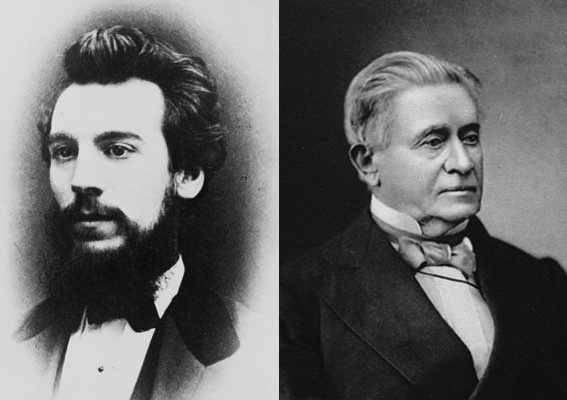
Coil Noise Experiment
Theory:
The production of sound through electricity and magnetism is a fairly simple process. It is based on energy conservation, the conversion of electrical energy into mechanical energy. In this case, electrical energy is the signal and mechanical energy is the sound.
When electricity travels, it produces a magnetic field around its path. Anytime a current passes through a coil of wire, a magnetic field is present around the coil. By using a wave generator, an alternating current keeps changing the electric field, which also changes the magnetic field.
A helix of coil with multiple layers can produce a strong enough magnetic field so that sound can be heard if a current passes through it. By setting the power generator frequency to 20Hz-20,000Hz, the hearing frequency range of humans, a sound can be heard from the apparatus in which the coil is interacting with. This is where electrical energy converts into mechanical energy and produces a sound.
A speaker works to make the sound much louder with less coil and current. In a speaker, the helix of coil is in between two circular permanent magnets. The magnetic field of the coil interacts with the magnetic field of the magnets. This produces a much larger magnetic field and a larger mechanical vibration. The vibrations then travel to the cone of the speaker, and that is where you hear the sound.
Bell explained this effect to his father Melville Bell in a letter. The coil was completely empty and he could still hear the sound.
See the image below for snippet of the letter

The complete letter can be found below.
» Click here for the complete letter describing the first discovery of the empty helix
Description of Bell’s Aparatus
Alexander Bell’s work was read out in front of the American Academy of Science. Where the helix is described to have be No.23 (Gauge wire presumably) having a resistance of 12 Ohms and is interrupted by a Rheotome (Make and Break) circuit at the frequency of 100Hz. He is said to observe the notes of the rheotome upon placing the helix to his ear. The complete paper is available in the resources below. A snippet can be seen here.
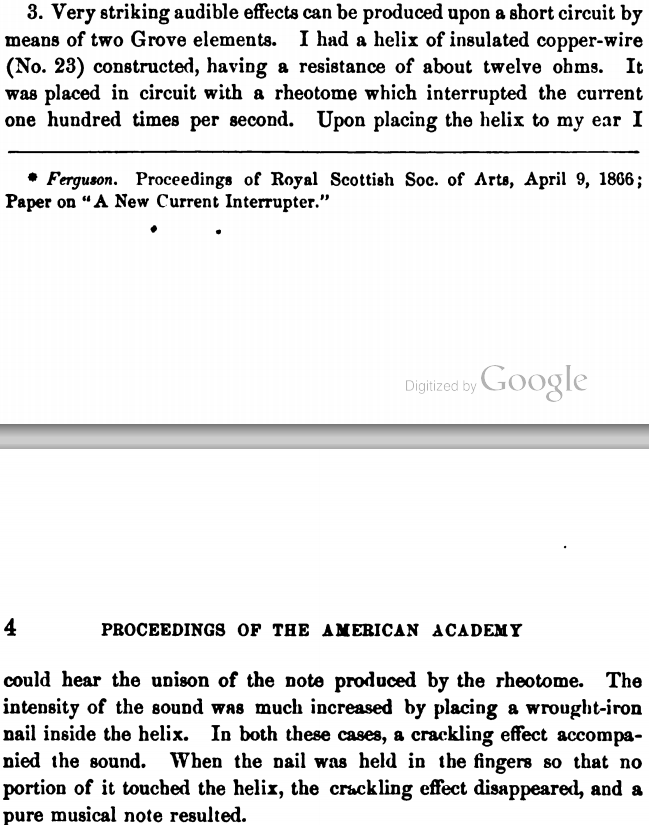
The Empty Helix letter to Hubbard
Bell explained his empty helix experiments to Hubbard. On applying intermittent current through an empty helix of insulated copper wire he perceived a faint noise from it. The sound became much more distinct on placing his finger at the end of the coil. He was suggested to fill the helix with different gasses and materials. He described the sound as a “crackling” sound rather than a musical note. On dropping pieces of metal (Brass and Copper), the sound hardly changed but on dropping an iron core through the helix, the sound intensified.
Bell thought that the sounds were emitted due to “molecular vibrations” in the coil or the core. He theorized that the more free the molecules, the more vibrations would occur and hence a more audible sound. It is fascinating to read these discoveries as the science at that time was not yet mature to explain the phenomena and therefore Bell relied on the work of Charles G. Page to account for the sound. This idea was soon proven incorrect by the various experiments he performed. We know now that the cause of the “coil noise” is simply due to the Lorrentz force experienced by the wires in the presence of a magnetic field.
Bell then proceeded to conduct a variety of experiments to better understand the phenomenon and support his claims.
The iron core of an electromagnet was replaced by a core consisting of thin disks of iron arranged side by side. The resulting sound should be louder than the solid core.

To prove this theory, he took three instruments and put them side by side as shown below.

As per his expectation, the sound he heard was much louder than any emitted before.
He then replaced the three iron cores by two iron nails kept head to head. (shown)
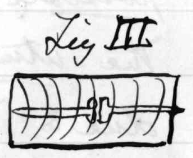
The intensity of sound further increased
The pitch of a large tuning fork was altered to bring it in synch with the transmitting instrument. On inserting the stem of the fork, the tuning fork sounded. (Shown below)
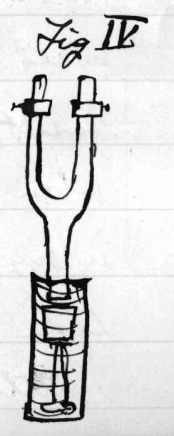
Finally, a wrought iron nail was placed in between two cylinders, as shown below.
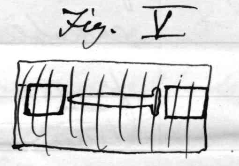
A clear musical note was observed, which was similar in pitch to the armature of the transmitting instrument and also equal in loudness.
The complete letter with a few more experiments can be seen in the link below.
» http://www.loc.gov/resource/magbell.07900105/?sp=1
Bell’s experiment recreation
Bell’s experiment was recreated to observe if what he reported was actually true. The following is the experiment.
Apparatus:
1. 10V Function Generator
2. 20-guage copper coil
3. Circuit board holder (vise)
4. Scotch tape
Procedure:
1. Start by wrapping the copper coil around the circuit board holders. Make sure you have some slack on the front end of the coil so that you can easily complete the circuit. Like a solenoid, complete 50 turns. There should not be any free space between the turns.
2. Wrap the layer with scotch tape.
3. Begin turning the coil once again over the first layer of coil. Complete 50 turns and again wrap the layer with scotch tape.
4. Repeat this process for 2 more layers. You should now have 4 layers of coil with a total of 200 turns.
5. Scrape the two ends of the coil with a knife to remove the insulation.
6. Simply connect the multi-layered solenoid to the function generator in series.
7. Turn the generator on and turn it to 10V. Adjust the frequency to 20Hz and slowly increase it until you hear a sound. This is coil noise!

Frequency Variation due to DC offset
To further explore the empty helix experiment, the current was increased and iron and ferrite was inserted in the helix to observe an increase in the sound as predicted by Bell. The iron core or nail increases the permittivity and effectively the sound from the helix.
In addition, an interesting phenomenon was observed when a DC offset was added to the input AC sinusoid. Adding the DC offset let to the reduction of the frequency of the output of the helix sound. As seen from the oscilloscope (below), the output frequency sinusoid had a doubled frequency, which increases as overtones.
This phenomenon is observed due to the increase in the vibrating frequency of the wire along the axial direction. The DC offset created an external uniform magnetic field across the coil. As seen above, the sound is produced due to the force experienced by the wires known as the Lorrentz force. The coil experiences a “Bunching mode” and is only a Lorrentz force between wires carrying current in the same direction as observed by Ampere. However, the dc offset provides a uniform magnetic field across the coil which results in a “Breathing mode”. This breathing mode is between the wires carrying current in the opposite direction which get attracted and repelled from each other as the AC current flips its direction.

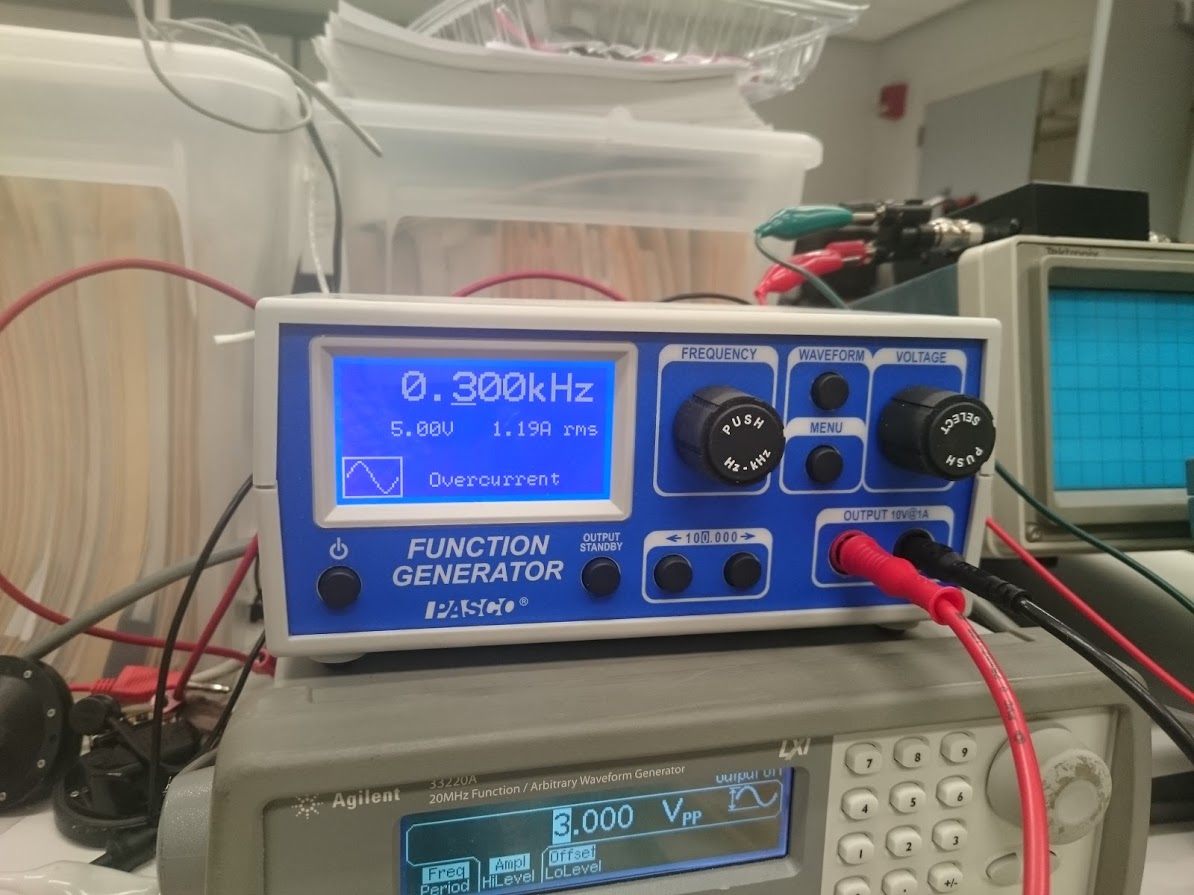
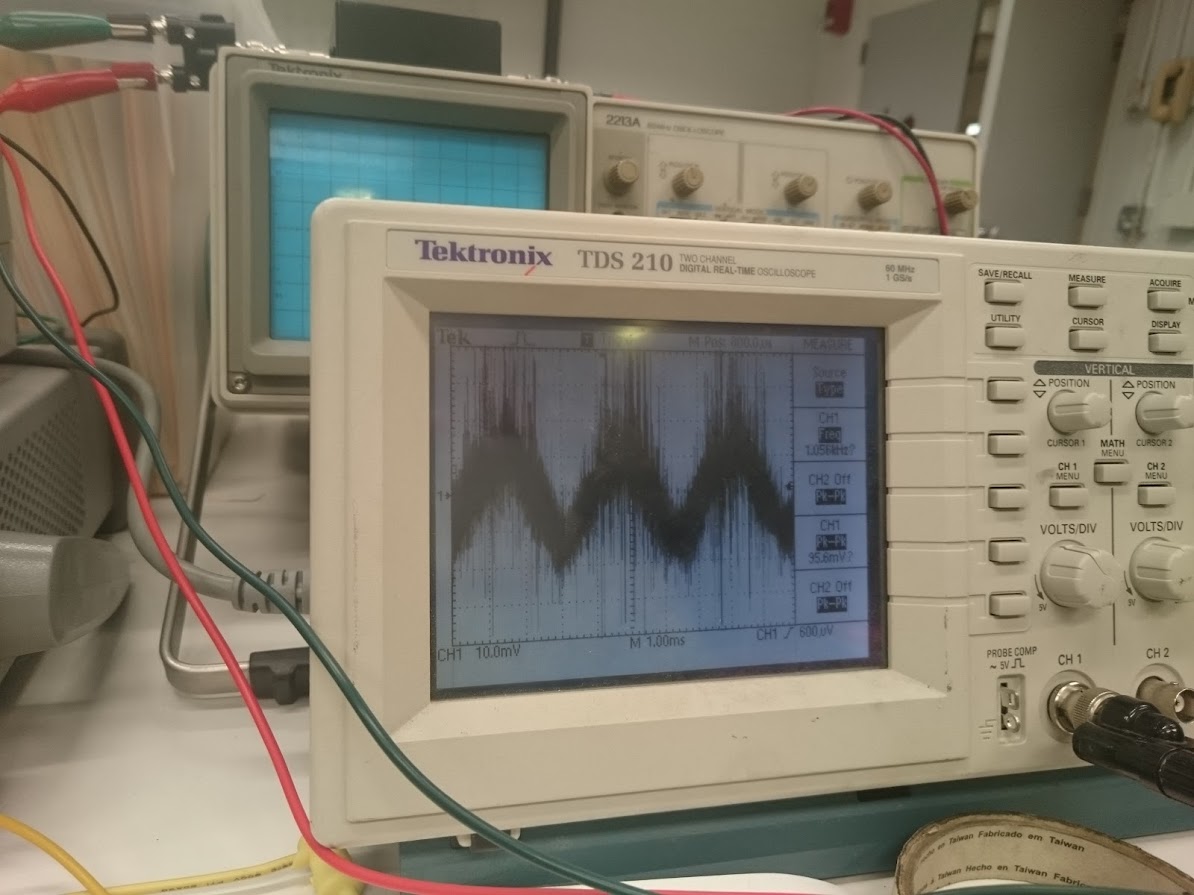
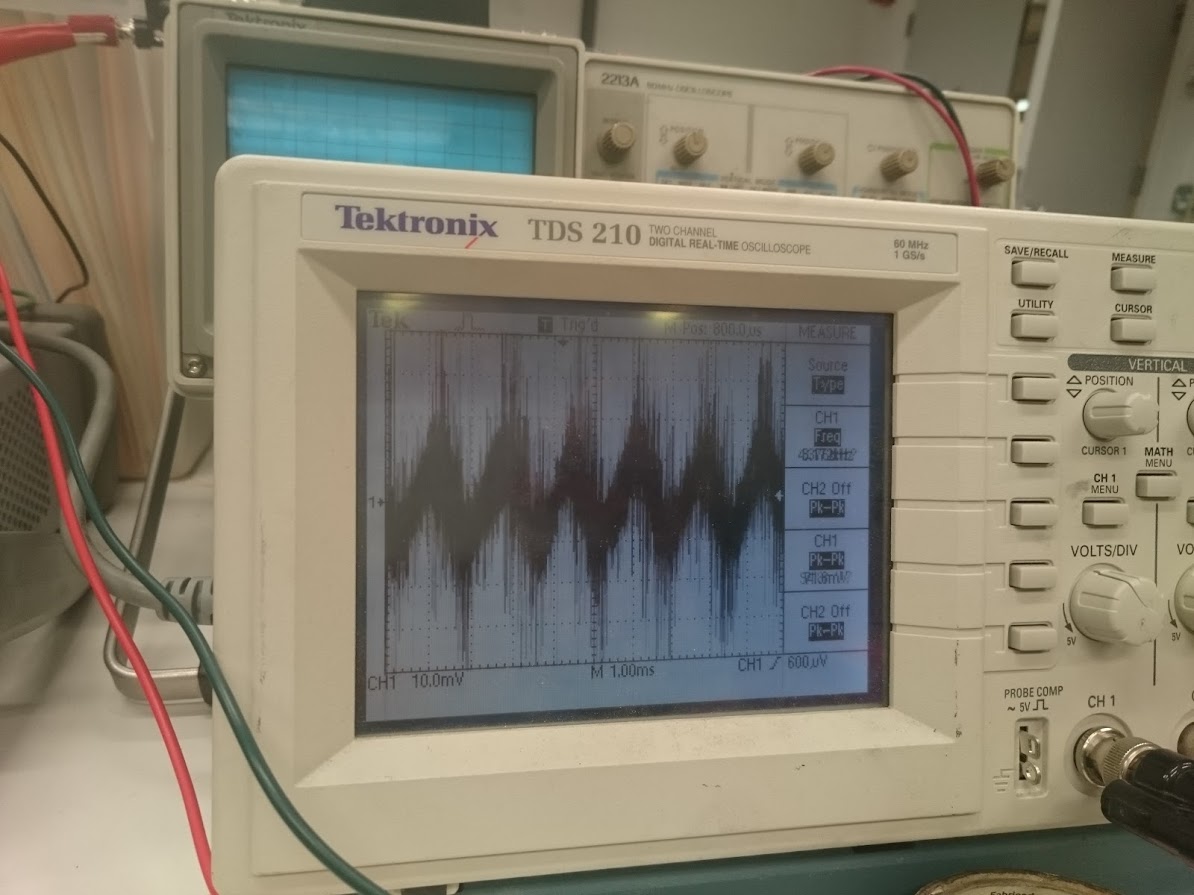
Bell and Henry write to each other
Bell writes to Henry (April 2, 1875)
Bell wrote to Joseph Henry on the 2nd April,1875 regarding his newest observation. Bell speculated that the sound that originated from the loop was an aftereffect of wire vibrations brought about by a current that flowed through the conductor. He additionally expressed how he tried and discovered a positive relationship between the wire resistance and the power of sound created.
In addition, Bell talked about a second, related experiment. For this experiment, Bell incorporated a hand drawn chart and examined how the consequences of this test helped bolster his introductory speculation.
The figure is as shown below.
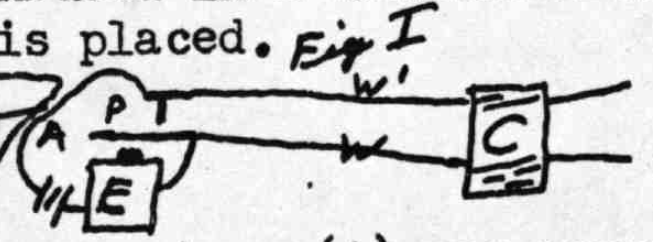
Bell claimed that he found that a sound could be generated from the Ruhmkorff coil without completing the circuit in which it is placed. In the figure above, an Electromagnet (E) with a vibrating armature (A) was vibrated against the Point (P). The wires shown above (W) and (W’) were taken into a separate room and connected to a ruhmkorff coil (C). He connected W to thick wire of the coil and W’ to the thin wire of the coil. After this, a noise was distinctly heard from the coil and the above experiment was repeatable using a tinfoil condenser. A more audible and loud noise was heard from the tinfoil condenser.
He carried on the experiment by crossing the two wires with each other. This led to the creation of sparks with a frequency similar to that of the vibration of the armature (A). His presumption was these effects were created due to the currents produced in the electromagnet and not by the intermittent current in the battery.

Bell closed the letter by inquiring as to whether his thoughts were unique
Click here for the complete letter
American Academy of Science
In order to shed some more light on the Ruhmkorff Coil, Bell gave an interesting lecture in front of The American Academy of Arts and Sciences.
The snippet of the Ruhmkorff Coil discussion can be found below. (To see the complete lecture, see references at the bottom)
Henry Writes back to Bell (April 29, 1875)
Prof. Henry wrote back to Bell encouraging him by saying that his experiments indeed provided explanation of the phenomenon observed by him.
The complete letter can be found below.
Click here for the complete letter
Watson and Bell Performed an experiment which led to the birth of the telephone
On June 2nd 1875 , Thomas Watson and Alexander Bell performed an experiment. He had three transmitters and receivers which were tuned correspondingly in his attic room, connected in series with a similar trio of receivers which was monitored by Watson in the adjoining room. One of the transmitting reeds accidentally became out of adjustment. When it was plucked it didn’t interrupt the circuit using the contacts but merely oscillated corresponding to the electromagnet without opening the contacts. Bell’s reed had vibrated itself with no transmitter current in the circuit. Bell called out for Watson and told him not to change the configuration. He knew what had happened and what it meant. The plucked reeds had induced the undulatory current that he had postulated a year ago, and an extremely feeble current had excited the electromagnet in his room enough to generate audible sounds.
The experimental setup (schematic version) of the Transmitter and Receiver is shown below.

A rare image of Bell’s actual transmitter and receiver is shown below.
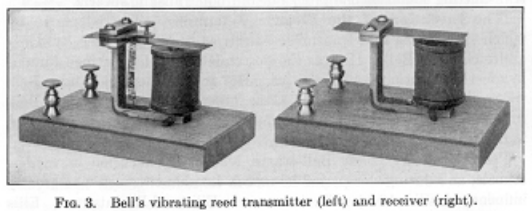
A closer view of Bell’s receiving instrument is shown below. This receiver is a more advanced version of the earlier receiver with a reed and make-and-break circuit.
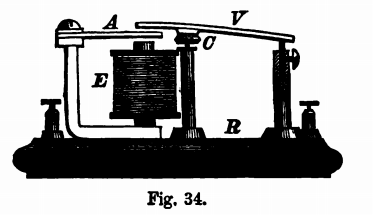
This cleared his doubt that minature amount of current was enough to generate audible sounds, and he has been quoted saying “These experiments,” he said, “at once removed the doubt that had been in my mind since the summer of 1874, that magnetoelectric currents generated by the vibration of an armature in front of an electromagnet would be too feeble to produce audible effects . . .” Immediately he felt that he had the key to the fulfillment of his long cherished dream of the electrical speaking telephone.
Thomas Watson has been quoted saying “”The twang of that reed I plucked on June 2, 1875, marked the birth of one of the greatest modern inventions, for when the electrically carried ghost of that twang reached Bell’s ear his teeming brain shaped the first first electrical speaking telephone the world has ever known.”
The reed apparatus is shown below.

Immediately after this, Bell drew up his model of the telephone, and told Watson to produce it. His original drawing is shown below.
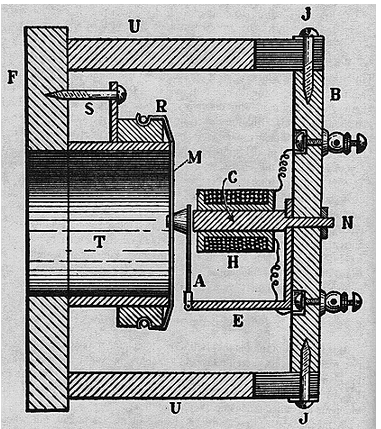
To further understand the difference between these currents, the following illustration is extremely helpful.

In order to produce an undulatory current, Bell made an instrument which would use magnets instead of battery.
He wrote to his sister (Carrie) and his parents saying he was trying to get his instruments to work by inducing a current of Electricity on the wire by means of a permanent magnet instead of a Battery.
The assembly he used has been described by himself as ” I had a number of magnets arranged on the surface of a cylinder, so that on rotating it their poles should successively pass in front of the Electro-magnet. When the pole of one of the magnets comes opposite, a current is induced in the line wire’ when the magnet leaves a current of opposite kind to the first, flows along the line wire. Hence the revolution of the cylinder should produce an oscillating current in the wire. If the direct and reversed currents come at equal distances apart — the oscillations correspond exactly to aerial sound waves, and hence should excite vibration in the armature of an electromagnet on circuit tuned to the right pitch.”
The drawing from the letter can be seen below:

This cylindrical instrument was found in our research at the Smithsonian Institute and can be seen below.
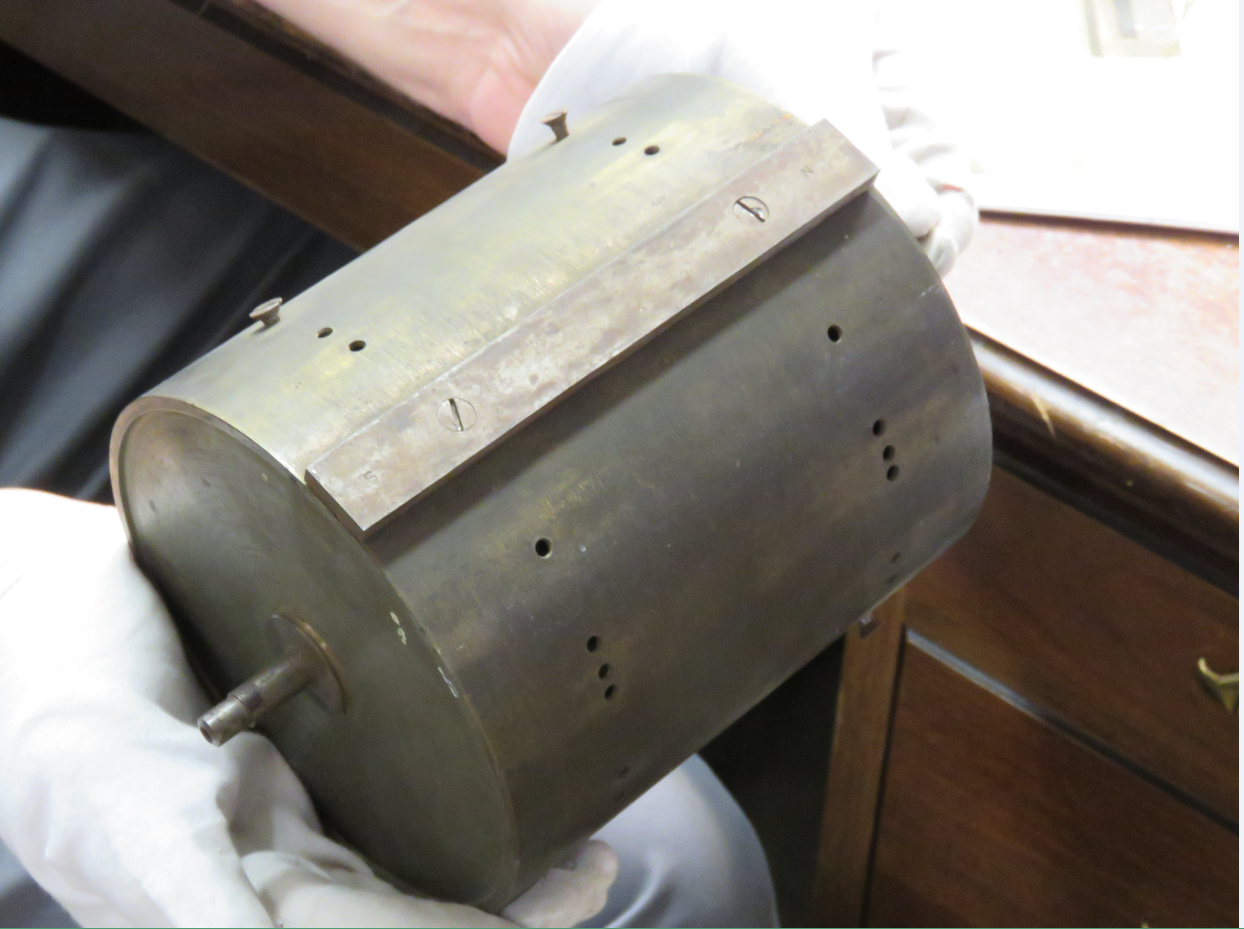
To view the full letter, click below.
» Bell’s Letter about the rotating Cylinder
Bell’s Liquid Telephone
Recreation
Bell’s Liquid Transmitter was recreated using a simple experiment. Bell used acidulated water, a parchment diaphragm and an iron nail. The iron nail when fixed to the diaphragm could vibrate and when dipped in acidulated water, would behave as a simple variable resistor. The iron nail would increase the conductance as it went deeper in the water.
The same experiment was recreated by a plastic cup, which was pierced through a wire. An amplifier and speaker was mounted on the mouth of the class and was fed with a simple cosine. The air pressure inside the cup changed sinusoidally causing the diaphragm with the wire dipped in Sulphuric Acid water to oscillate up and down. The water was then connected to an oscilloscope for observation. The cup arrangement is shown below.
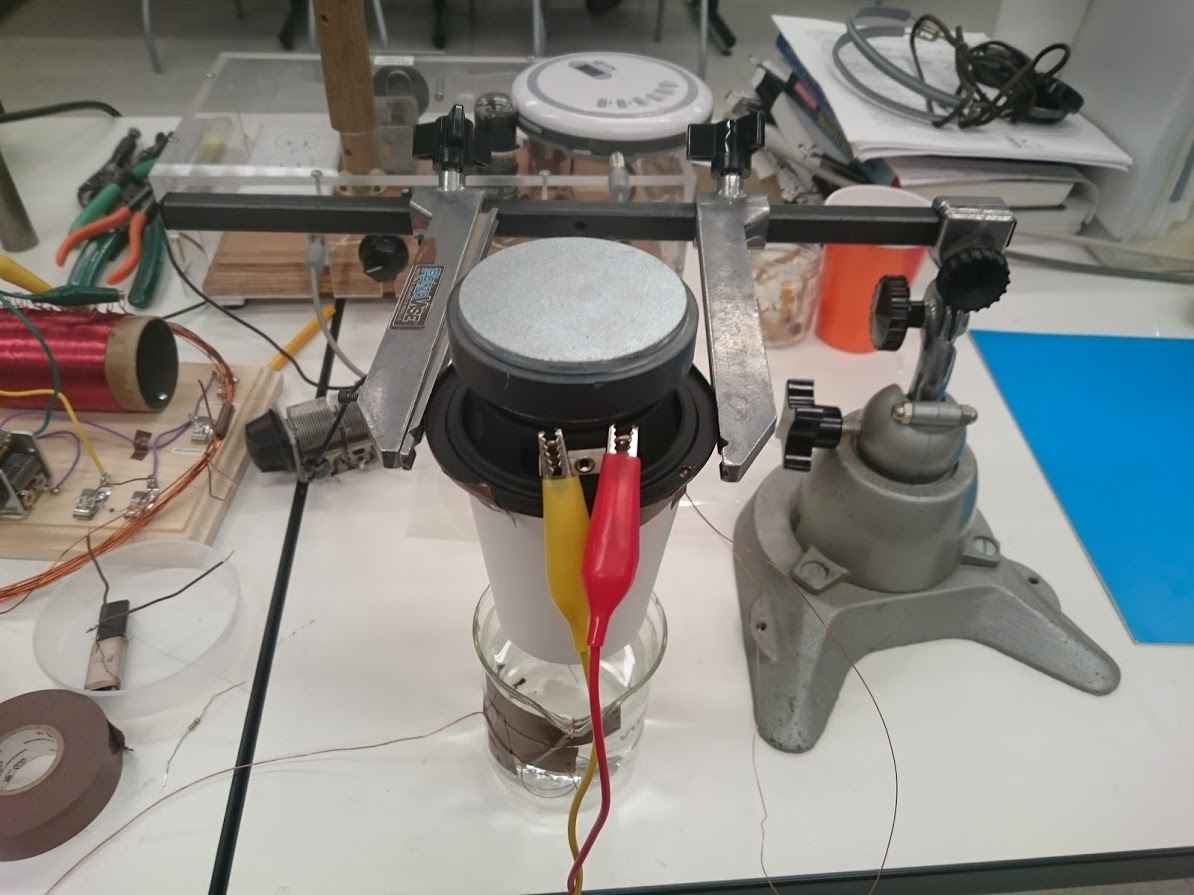
The response was observed and can be seen in the video below.
Liquid Telephone Experiment
Conclusion
This experiment done by Alexander Graham Bell, which was later validated by Prof Henry via a letter shows us how sound can travel through an electrical current and reproduce within a magnetic field caused by the current. This is fundamental in the understanding of sound production through electricity.
After this experiment Bell went hard at work to make his dream of a human-voiced telegraph a reality. With the help of Thomas Watson, inspiration from Joseph Henry, and a better understanding of electricity and magnetism, Bell eventually “got it.”
Important References
Smithsonian Institution
The Smithsonian Institution provides an interesting account about the history of the telephone. It shows how Alex Bell got his inspiration, and how he came up with his marvelous invention. It also shows, Prof Henry’s contributions towards the important invention.
Click here for Joseph Henry and the Telephone
Work by Prof Michael E. Gorman
An interesting study of AG Bell’s path to the telephone. It is an attempt to reconstruct, in finer detail, the path taken by Alexander Graham Bell and his mental and mechanical models.
Below is the link
» Alexander Graham Bell’s Path to the Telephone — Home Page
Prescott’s The Speaking Telephone and others
George Prescott’s novelettes give an in depth account of the contributions of Alex Bell, CG Page, Henry and many others in the discovery of the telephone. The book gives a crucial account of Page’s Galvanic Music which Alexander Bell used to understand the conversion between electricity and sound leading to telephonic research.
Galvanic_Music_1837_Page_Silliman.pdf
Page’s Original Publication
C.G. Page’s original publication is given here in the American Journal of Science.
Bell’s Inspiration of Molecular Vibration
Bell was inspired by Page’s work and he referenced Page in various papers and lectures. Page’s other published original work can be found below.
Bell gave a wonderful lecture in front of the American Academy of Arts and Sciences in 1876, just after discovering the telephone. He talks about the ruhmkorff coil, the june experiment and the undulatory and intermittent current.
Bell Biographical memoir
NATIONAL ACADEMY BIOGRAPHICAL MEMOIRS VOL. XXIII of Alexander Bell show the important stages in Bell’s life, and his interaction with Joseph Henry and the June experiment.
Bell Biographical Memoir (Pg 6-7)
Electrical Communication by Arthur Leumel Albert (Pg8)
Notebooks of AG Bell (1875-1876)
The period of 1875-1876 was the most crucial in the discovery of the telephone. Bell maintained a lab notebook of his work and can be found in the URL below.
» Alexander Graham Bell Laboratory Notebook, 1875-1876 — Viewer — World Digital Library